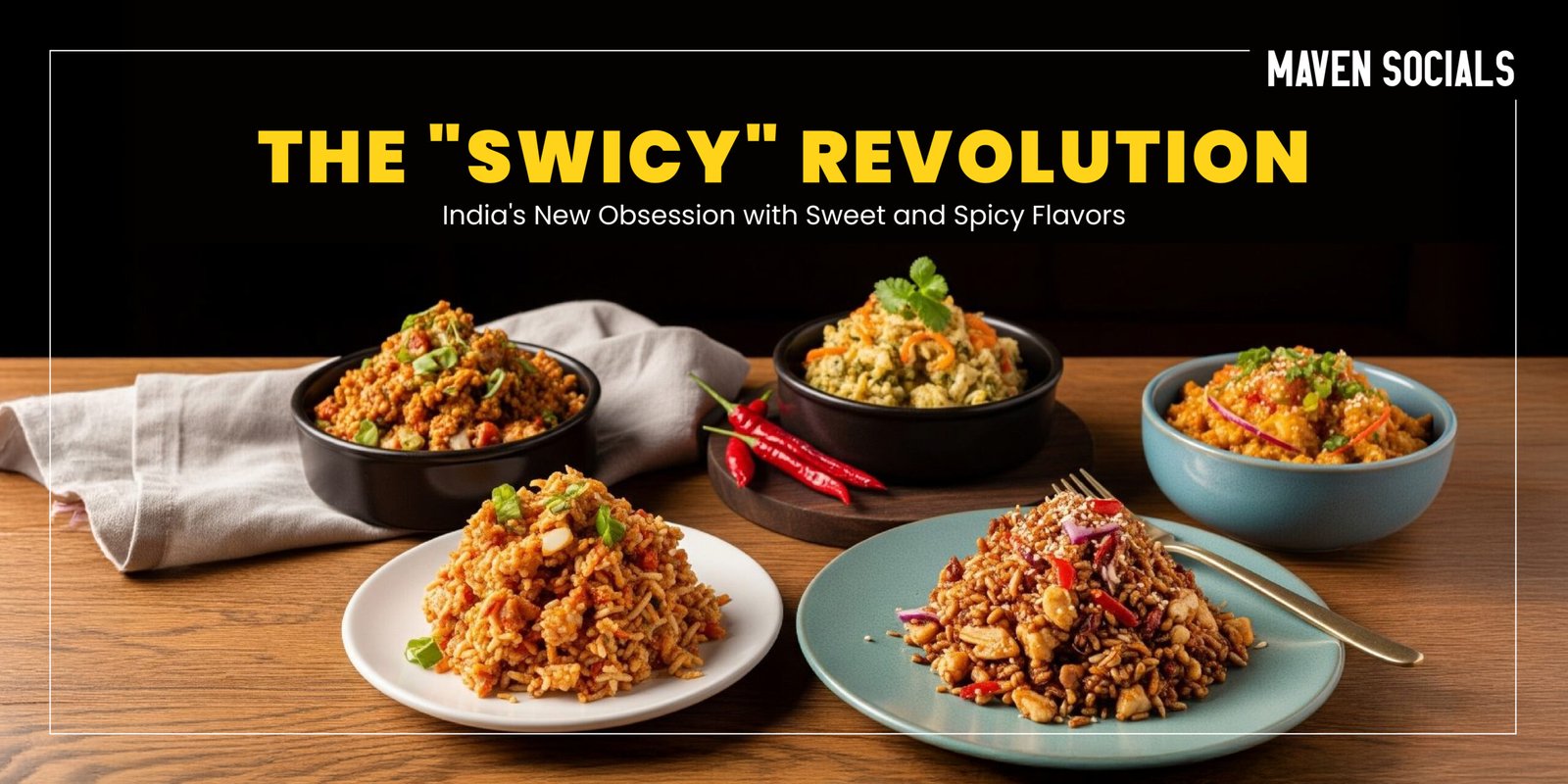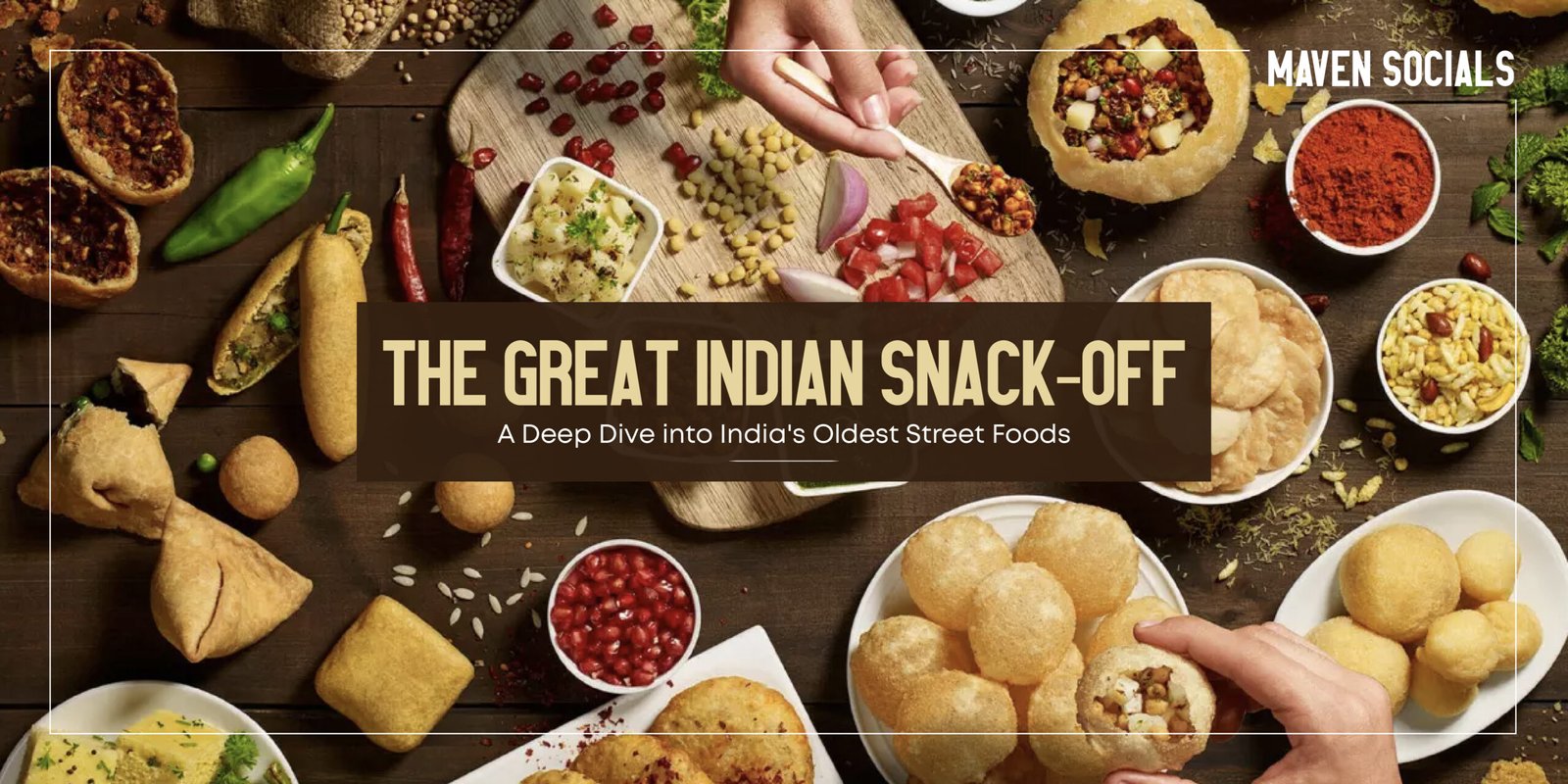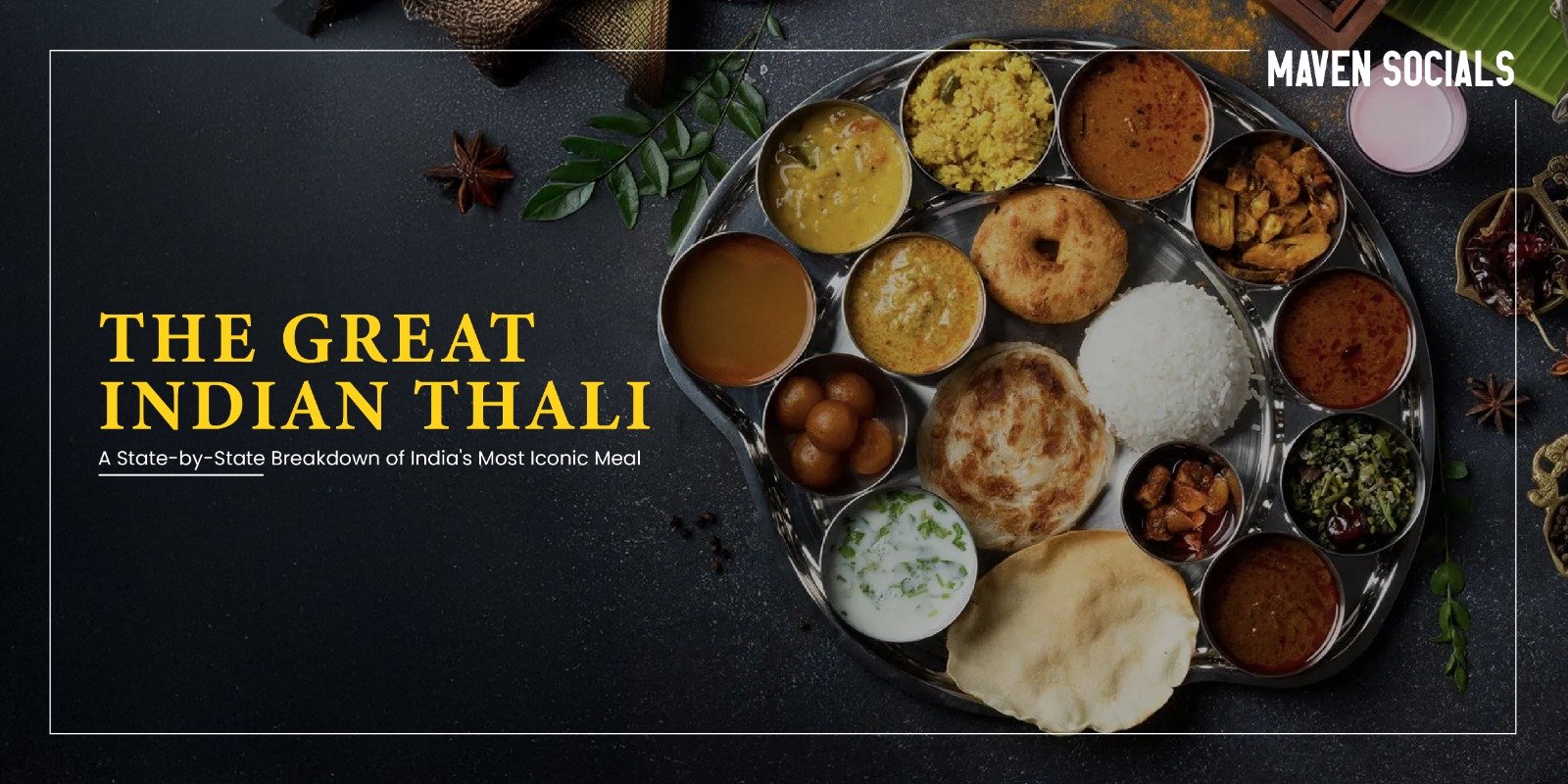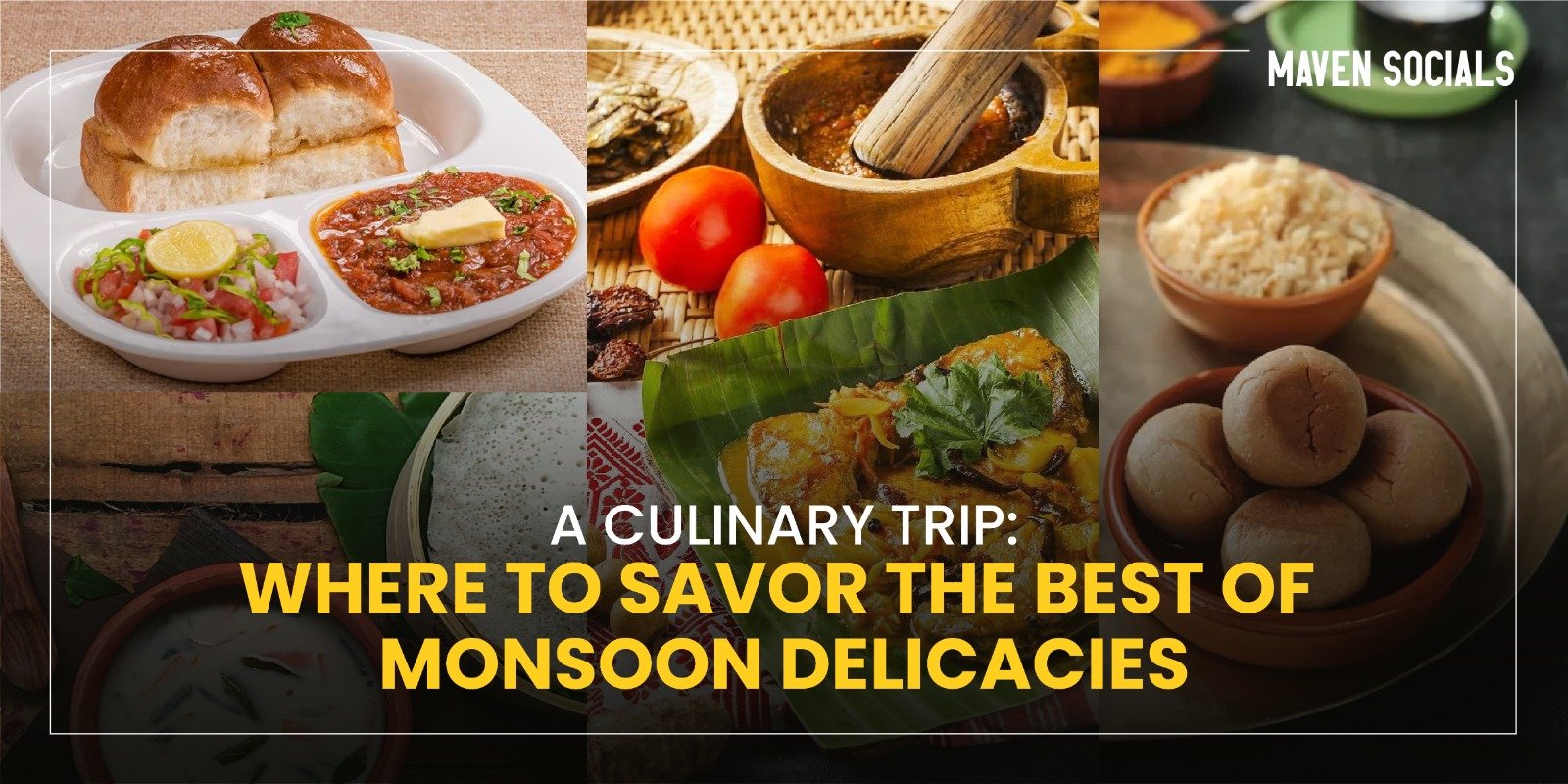The Indian culinary landscape is experiencing a delicious revolution, and it has a catchy name: Swicy. This portmanteau of “sweet” and “spicy” represents more than just a trendy hashtag – it’s a flavor profile that’s capturing hearts, taste buds, and social media feeds across the nation. From street-side chaat vendors to upscale restaurants, the swicy trend is transforming how we think about flavor combinations in modern Indian cuisine.
What Exactly is the Swicy Trend?
The swicy phenomenon combines the comforting warmth of sweetness with the exciting kick of heat, creating a balanced flavor experience that keeps you coming back for more. While this might sound like a new-age food fad, the truth is that Indian cuisine has been mastering this delicate balance for centuries – we’re just giving it a trendy new name.
This flavor combination works by triggering multiple taste receptors simultaneously, creating a complex sensory experience that satisfies both our primal craving for sweetness and our adventurous desire for heat. The result? An addictive flavor profile that’s perfectly suited to the Indian palate, which has always embraced bold, multi-dimensional tastes.
Traditional Indian Swicy Champions
Chaat: The Original Swicy Superstar
Long before “swicy” became a buzzword, Indian street food was already perfecting this flavor combination. Chaat, in all its glorious variations, represents the epitome of swicy cuisine. Take the beloved Bhel Puri – crispy puffed rice mixed with tangy tamarind chutney (sweet), fiery green chutney (spicy), and fresh vegetables. Each bite delivers a symphony of flavors that dance between sweet and heat.
Papdi Chaat takes this concept even further, layering crispy wafers with sweet yogurt, mint chutney, and a generous sprinkle of chaat masala that brings both sweetness from dried mango powder and heat from black pepper and chili.
Regional Swicy Treasures
Gujarati cuisine has been championing swicy combinations for generations. Dishes like Dhokla often come with sweet and spicy chutneys, while Undhiyu masterfully balances jaggery’s sweetness with the heat of green chilies and aromatic spices.
Rajasthani cuisine offers gems like Gatte ki Sabzi, where gram flour dumplings swim in a gravy that perfectly marries the sweetness of onions and tomatoes with the fire of red chilies and garam masala.
South Indian cuisine contributes with dishes like Mysore Pak paired with spicy sambar, or the iconic Medu Vada served with both coconut chutney (mildly sweet) and fiery sambar.
Modern Swicy Innovations Taking Over Indian Kitchens
The contemporary Indian food scene is embracing swicy combinations with unprecedented creativity, resulting in dishes that honor tradition while embracing innovation.
Fusion Starters and Appetizers
Honey Chili Paneer has become a restaurant favorite, coating cubes of fresh paneer in a glaze that balances honey’s natural sweetness with the punch of fresh chilies and aromatic garlic. This dish perfectly embodies the swicy trend’s appeal to modern Indian diners.
Spicy Mango Chili Salsa represents another innovative approach, combining the tropical sweetness of ripe mangoes with the heat of jalapeños, creating a condiment that elevates everything from grilled meats to simple rotis.
Dessert Revolution
Perhaps the most exciting frontier in the swicy movement is desserts. Chili Chocolate Ladoos are gaining popularity among adventurous sweet lovers, incorporating dark chocolate’s rich sweetness with a subtle hint of cayenne pepper that creates a warming finish.
Kulfi with Chili Salt offers another intriguing combination, where traditional Indian ice cream meets the tangy heat of chili-lime seasoning, creating a dessert that’s both cooling and warming.
Beverage Innovations
The swicy trend has also influenced the beverage industry. Spicy Mango Lassis combine traditional yogurt-based drinks with the heat of black pepper or chili powder, while Masala Chai Cocktails incorporate traditional spice blends with sweet liqueurs for an adult twist on swicy flavoring.
The Science Behind Our Swicy Obsession
Understanding why swicy combinations are so appealing requires a dive into food science and psychology. When we consume sweet foods, our brain releases dopamine, creating feelings of pleasure and satisfaction. Spicy foods, meanwhile, trigger the release of endorphins as our body responds to the perceived “threat” of capsaicin, the compound that makes chilies hot.
When combined, these two sensations create a unique neurological response. The sweetness provides immediate gratification while the heat creates excitement and releases endorphins, resulting in what food scientists call a “bliss point” – a perfect balance of flavors that triggers maximum pleasure response.
Additionally, the contrast principle plays a significant role. When we experience contrasting flavors simultaneously, our taste buds become more sensitive to both, enhancing the overall eating experience. This explains why a sweet mango tastes even sweeter when paired with chili powder, and why spicy food seems more intense when followed by something sweet.
Where to Experience the Swicy Revolution
Several Indian restaurants and cafes are leading the swicy charge, creating destinations for adventurous food lovers:
- Mumbai’s street food scene continues to evolve, with vendors experimenting with traditional chaat recipes by adding innovative sweet elements like date syrup to spicy preparations.
- Delhi’s modern Indian restaurants are incorporating swicy elements into fine dining experiences, with establishments creating tasting menus that explore the sweet-spicy spectrum through multiple courses.
- Bangalore’s cafe culture has embraced swicy beverages and desserts, with independent coffee shops offering spiced hot chocolates and chili-infused ice creams.
- Chennai’s innovative eateries are reimagining South Indian classics with swicy twists, creating dishes like spicy-sweet uttapam toppings and innovative sambar variations.
The Future of Swicy in Indian Cuisine
The swicy trend shows no signs of slowing down. Food entrepreneurs are developing packaged swicy snacks, while home cooks are experimenting with DIY swicy recipes shared across social media platforms. This trend represents more than just a passing fad – it’s a natural evolution of Indian cuisine’s inherent complexity and boldness.
As we move forward, expect to see swicy elements incorporated into everything from traditional festival sweets to modern fusion cuisine. The trend perfectly captures the contemporary Indian palate’s desire for familiar yet exciting flavors, making it a permanent fixture in our culinary landscape.
The swicy revolution isn’t just about food – it’s about celebrating India’s incredible ability to balance opposites, creating harmony from contrast, and finding innovation within tradition. Whether you’re biting into a perfectly spiced chaat or savoring a chili-chocolate creation, you’re participating in a uniquely Indian culinary experience that honors our past while embracing our flavorful future.
Frequently Asked Questions (FAQs)
What does swicy mean in food?
Swicy is a portmanteau of “sweet” and “spicy” that describes the food trend combining sweet and spicy flavors in a single dish. This flavor profile creates a balanced taste experience by triggering multiple taste receptors simultaneously, offering both the comfort of sweetness and the excitement of heat. Indian cuisine has been perfecting this combination for centuries through dishes like chaat, regional curries, and chutneys.
What are some popular swicy Indian dishes?
Popular swicy Indian dishes include traditional street food like Bhel Puri and Papdi Chaat, which combine sweet tamarind chutney with spicy green chutney. Modern innovations include Honey Chili Paneer, Spicy Mango Chili Salsa, and Chili Chocolate Ladoos. Regional dishes like Gujarati Dhokla with sweet and spicy chutneys and Gatte ki Sabzi from Rajasthan also exemplify this flavor combination.
Why are sweet and spicy flavors so addictive?
The combination of sweet and spicy flavors is addictive due to the neurological response it triggers. Sweet foods release dopamine, creating pleasure, while spicy foods containing capsaicin trigger endorphin release as the body responds to heat. Together, they create a “bliss point” – a perfect balance that maximizes pleasure response. The contrast principle also makes taste buds more sensitive to both flavors, enhancing the overall eating experience and making swicy combinations irresistible.
Where can I try swicy food in India?
You can experience the swicy revolution across India’s major cities. Mumbai’s street food vendors offer innovative chaat recipes with sweet-spicy combinations. Delhi’s modern Indian restaurants create fine dining experiences with swicy tasting menus. Bangalore’s cafes serve swicy beverages and desserts like spiced hot chocolates and chili-infused ice creams. Chennai’s eateries reimagine South Indian classics with swicy twists. Local street food markets and contemporary fusion cuisine restaurants are your best bet.
Is the swicy trend here to stay in Indian cuisine?
Yes, the swicy trend is more than a passing fad. It represents a natural evolution of Indian cuisine’s inherent complexity and boldness. Food entrepreneurs are developing packaged swicy snacks, and home cooks are sharing swicy recipes on social media. The trend perfectly captures the contemporary Indian palate’s desire for familiar yet exciting flavors. Given that Indian food has been balancing sweet and spicy for centuries, this food revolution is simply a modern celebration of traditional flavor wisdom, making it a permanent fixture in India’s culinary landscape.













